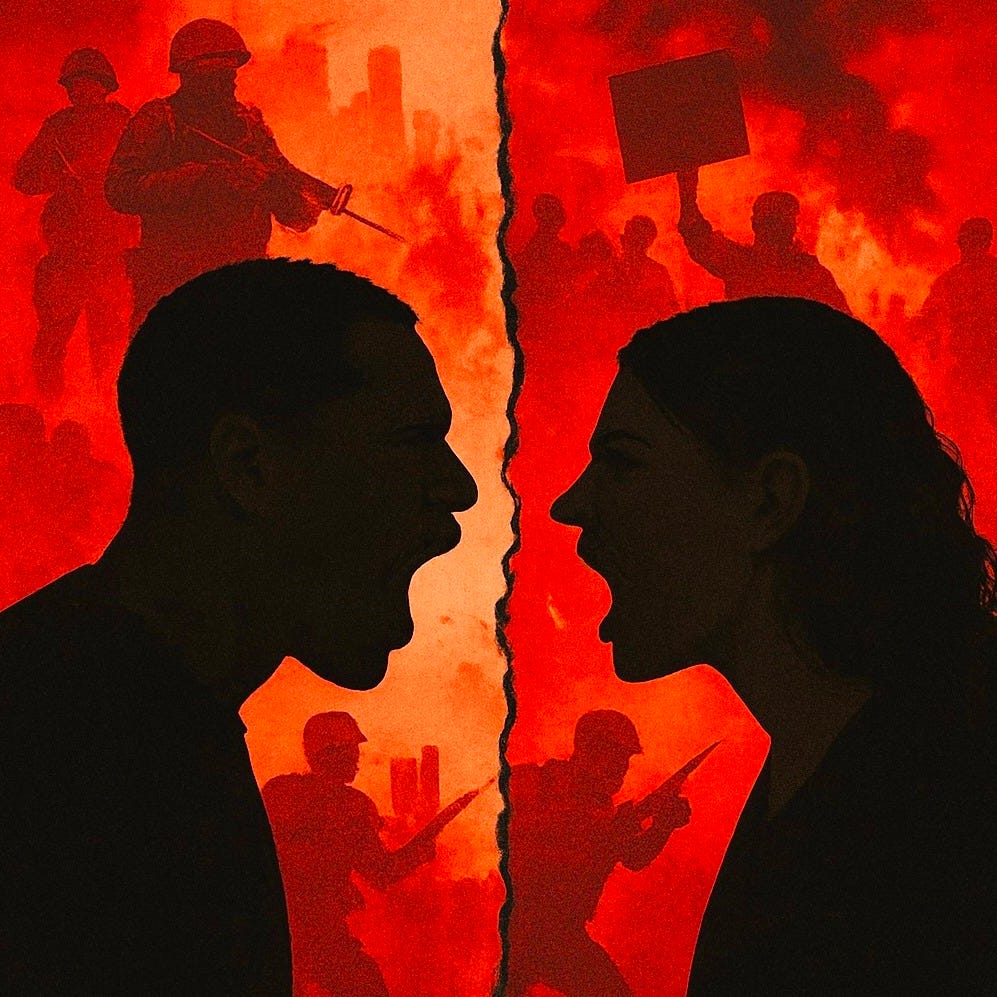The Ache Beneath the Headlines
Every headline feels like another crack in the foundation of humanity.
Another shooting, another war, another act of hate.
I don’t need to list them—you already know. They’ve become constant. So ordinary that we have grown desensitized.
But beneath each of these tragedies is the same quiet pattern:
Human beings who don’t feel safe.
Why We Reach for Anger
When our nervous systems sense threat, they mobilize. Stress hormones surge and our bodies prepare to fight or flee. But fleeing feels weak, so we fight. We search for an enemy and we divide the world into “us” and “them.”
Part of this division means dehumanizing the other side—stripping away their complexity, seeing them not as full human beings but as enemies who must be conquered. We then gather alliances and armies of people who agree with us, reinforcing that dehumanization.
The strategy makes sense on a biological level, but it does not work on a human level.
Because every act of hate guarantees another act of retaliation. Every enemy attacked will attack back harder.
What we are creating is not safety—it is a world that is more volatile, more violent, and more unpredictable. So we have to ask ourselves: To what end does this serve?
The Illusion of Control
The truth is, hatred feels easier because it’s familiar.
Anger is familiar. Fighting back is familiar. They give us the illusion of control.
But familiarity is not the same as ease. And it is not the same as safety.
We often mistake what is habitual for what is natural.
Hatred and retaliation are patterns we’ve rehearsed—passed down through culture, family, media, and survival. They feel automatic, but that doesn’t make them inevitable. There is always a pause, however brief, where another choice is possible… if we’d only take it.
Because hatred is not easy, it is crushing.
It destroys trust, relationships, and communities.
It keeps our nervous systems locked in hyper-vigilance.
It passes trauma from one generation to the next.
And it models for our children a way of living where:
Conflict means annihilation
Dignity and respect have no place
Joy cannot survive
What Are We Actually Creating?
We need to ask, with brutal honesty:
What are we actually achieving with all this hatred?
A darker world. An angrier world.
And sadly, a world where children grow up believing:
Reactivity is strength
Vengeance is safety
Division is inevitable
It Starts at Home
And this isn’t just about global events.
It begins in our kitchens, our marriages, and our workplaces.
A spouse forgets the dishes once, twice, three times.
At first, you hold your tongue thinking, “They forgot.”
But then resentment builds. Judgments take root, words like “selfish,” “careless,” and “uncaring” begin to play on repeat as you start thinking, “They don’t care about me.”
By the third time dishes are not done, you’re not yelling about dishes—you’re yelling about who they are: “You are so selfish and just don’t care!”
What started as discomfort hardens into enemy images and then explodes into rage.
And with each step, you move from behavior to judgment to dehumanization.
The same pattern that destroys families, destroys nations.
This is the continuum:
From silence to resentment
From resentment to hatred
From hatred to violence
From violence to a world that is teaching our children to live in darkness
We tell ourselves this is the only way because it feels natural.
But it isn’t inevitable. It is a choice.
We are choosing to live in anger and fear. We are choosing strategies that guarantee more suffering—for us, and for our children.
And I cannot look at my daughters and accept that as their inheritance.
The Possibility of Neutrality
So what if we stopped mistaking hatred for safety?
What if we interrupted the pattern earlier—at discomfort, at resentment—before it hardened into rage?
What if we chose neutrality over retaliation?
Not love, not forgiveness, not even agreement—just neutrality.A willingness not to escalate. A refusal to turn discomfort and difference into destruction.
What if we stopped fighting hate with hate and began disarming it with restraint and deliberate non-escalation?
This wouldn’t make us saints or friends. But it would make survival possible.
It would make coexistence possible. Not harmony, not unity—just non-annihilation.
Neutrality is not the goal. But sometimes, it’s the most accessible doorway to something better. The capacity for care is still there—in all of us.
But when fear or rage takes over, that capacity can be hard to access.
In those moments, asking for empathy might feel like too much.
So we ask for less and arrive at neutrality—because neutrality interrupts the cycle.
It doesn’t heal, but it invites a pause. And from that ground, maybe—eventually—we find our way back to something more human.
But in the meantime, maybe the most radical choice we have left
is the choice to live in the same world without trying to destroy each other.
The Legacy We Leave
The way we are living now is not sustainable.
It is not humane. And it is not survivable.
If we keep choosing hate, the only legacy we leave our children
is a world so dangerous, so divided, that light itself cannot break through.
But if we choose differently—if we choose neutrality over retaliation,
coexistence over annihilation—
we might just give them something else.
Not a perfect world, nor a healed world.
But a world still standing.
A world where non-annihilation is possible.
And where, from that fragile ground, something better can still grow.


